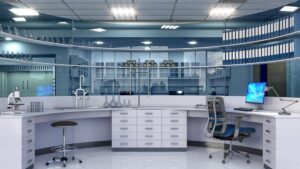
In the fast-paced world of scientific research and industrial applications, high-volume laboratories face unique challenges that require specialized solutions. These laboratories often handle large quantities of materials, diverse samples, and sophisticated equipment, all within limited spaces. The efficiency and safety of these labs depend heavily on how well they manage their storage needs.
Innovative storage solutions are not just about fitting more into less space; they are about enhancing workflow, ensuring quick access to essential materials, and maintaining a safe environment for both personnel and experiments. As the demands on high-volume laboratories continue to grow, so too does the need for smarter, more adaptable storage systems.
This article explores the latest advancements in storage technology and design, offering insights into how high-volume laboratories can optimize their space and operations for maximum efficiency and effectiveness.
Understanding the Storage Needs of High-Volume Laboratories
High-volume laboratories operate under unique pressures that make efficient storage solutions essential. These labs, often found in research institutions, pharmaceutical companies, and industrial settings, are characterized by their need to handle a vast array of materials and equipment on a daily basis. Understanding the specific storage needs of such environments is the first step toward designing effective storage systems.
Types of Materials Stored
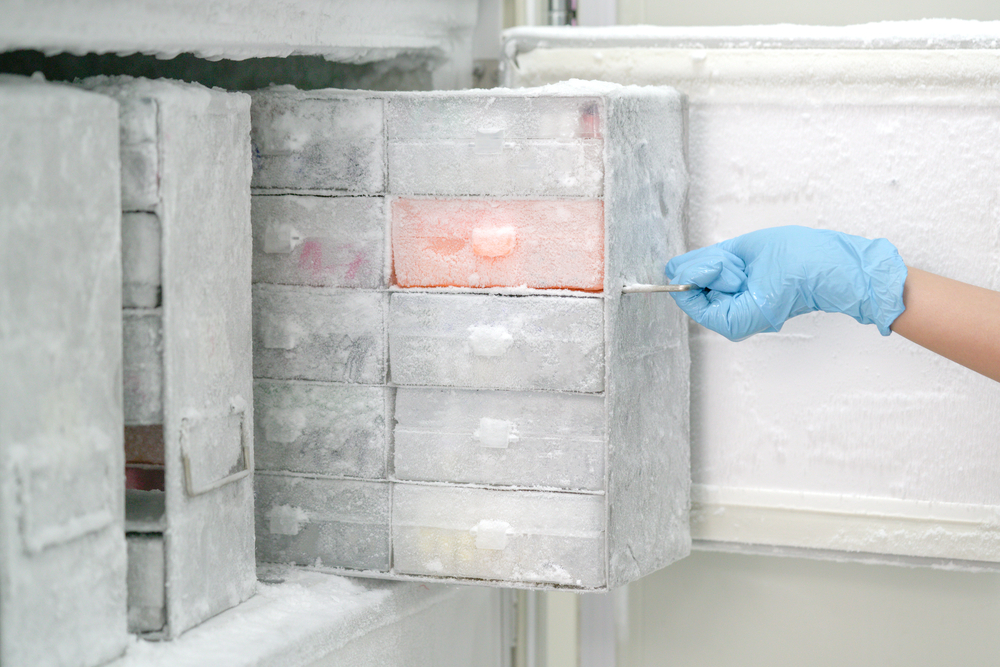
One of the defining features of high-volume laboratories is the diversity of materials they handle. These labs store everything from chemicals and reagents to biological samples, specialized instruments, and large pieces of equipment.
Each of these materials comes with its own set of storage requirements:
- Chemicals and Reagents: These typically require secure, clearly labeled storage in fire-resistant cabinets. Some high-volume laboratories may need to be kept under specific environmental conditions, such as controlled temperatures or humidity levels.
- Biological Samples: These are typically stored in freezers, refrigerators, or specialized cryogenic units to preserve their integrity. Access to these samples needs to be both secure and convenient to ensure efficient workflow.
- Specialized Instruments: High-volume laboratories use a wide range of instruments, many of which require secure storage to prevent damage and ensure they remain calibrated and ready for use. Storage must also allow for easy access and maintenance.
- Large Equipment: Items like centrifuges, incubators, and analytical instruments often dominate lab space. These require dedicated storage solutions that integrate seamlessly with the high-volume laboratories’ layout and workflow.
Space Management Challenges
Managing space effectively in high-volume laboratories is a constant challenge. The sheer volume of materials and equipment, coupled with the need for frequent access, can quickly lead to cluttered and inefficient workspaces if not properly addressed.
Some key challenges include:
- High Turnover of Materials: high-volume laboratories typically have a rapid turnover of materials, with new supplies constantly arriving and old ones being used or discarded. This necessitates storage solutions that are not only spacious, but also easy to organize and reorganize as needed.
- Large-Scale Equipment: The presence of large equipment in these labs can severely limit available space for other essential items. Effective storage solutions must find ways to maximize the utility of every square foot, frequently by going vertical or using mobile units that can be moved out of the way when not in use.
- Frequent Access Needs: In high-volume laboratories, materials and equipment must be readily accessible to multiple users at all times. This requires storage solutions that minimize the time spent searching for items and ensure that everything is within easy reach, even during peak activity periods.
By understanding these specific storage needs and challenges, laboratory designers and managers can begin to explore innovative solutions that will enhance both the functionality and safety of high-volume laboratory environments.
Innovative Storage Solutions
To meet the demanding needs of high-volume laboratories, innovative storage solutions must be both versatile and efficient. These solutions are designed to maximize space, enhance workflow, and ensure the safety of both personnel and materials. Below, we explore some of the most effective and forward-thinking storage options available for high-volume laboratories.
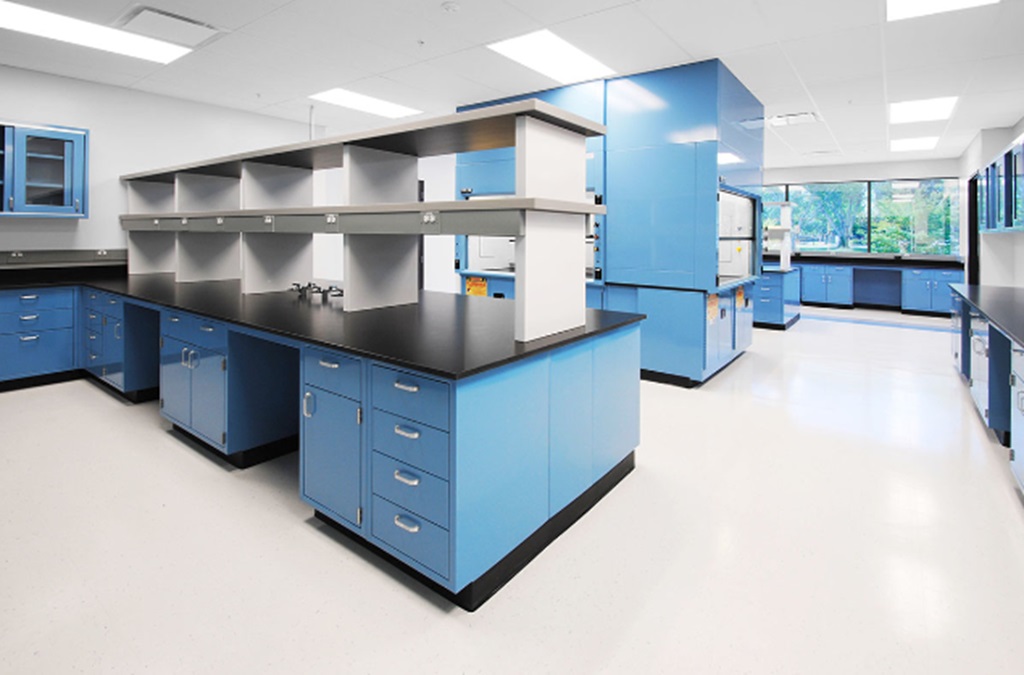
Modular Storage Systems
Modular storage systems are a cornerstone of modern laboratory design, offering unparalleled flexibility in how space is utilized. These systems consist of interchangeable components such as cabinets, shelves, and drawers that can be easily reconfigured or expanded as the needs of the lab change.
This adaptability is particularly beneficial in high-volume laboratories, where the variety and quantity of stored items can vary significantly over time.
Examples of Modular Units:
- Adjustable Shelving: Allows for easy modification of shelf heights to accommodate different sizes of containers and equipment.
- Interchangeable Drawer Units: Can be customized to store specific items, from small vials to larger tools, and can be rearranged or replaced as needed.
- Stackable Cabinets: Offer vertical expansion, making the most of available space while keeping items organized and accessible.
Automated Storage and Retrieval Systems (ASRS)

- How ASRS Works: Automated Storage and Retrieval Systems (ASRS) represent a significant leap forward in laboratory storage technology. These systems use robotics and computerized controls to manage the storage and retrieval of items. By automating these processes, ASRS minimizes human error, reduces retrieval times, and optimizes space usage.
- ASRS Benefits in High-Volume Settings: For high-volume laboratories, ASRS can dramatically improve efficiency by streamlining the storage and retrieval of frequently used items. These systems are particularly valuable in environments where large quantities of similar items are stored, as they can quickly locate and deliver materials to lab personnel with minimal effort. Additionally, ASRS can help maintain a clean and organized workspace by reducing the clutter often associated with manual storage systems.
High-Density Storage Solutions
- Vertical Storage: High-density storage solutions are designed to maximize space by utilizing areas that might otherwise go unused, such as vertical space. Vertical storage units, like tall cabinets and shelving systems, allow laboratories to store more items in the same footprint. These solutions are particularly effective in labs with limited floor space, as they free up room for other essential activities while keeping materials organized and easily accessible.
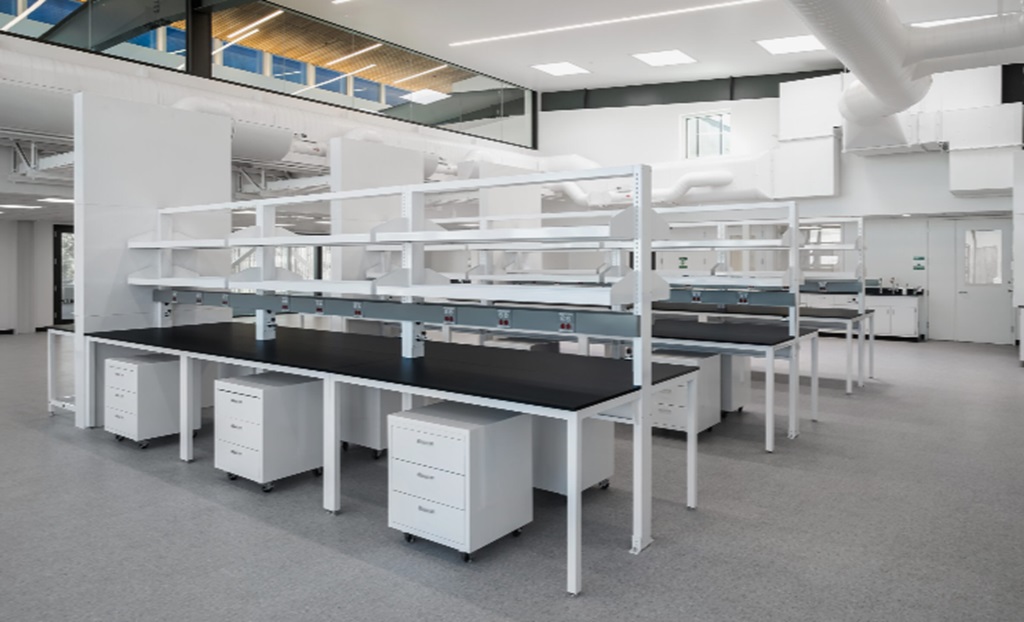
- Mobile Storage Units: Mobile storage units offer another layer of flexibility, allowing laboratory staff to move storage systems as needed. These units are typically mounted on wheels and can be relocated to different parts of the lab depending on workflow demands. For example, mobile carts can be stocked with specific materials for particular experiments and moved close to the workspace, then returned to storage when no longer required. This not only improves accessibility but also helps to maintain a tidy and organized laboratory environment.
Specialized Storage for Sensitive Materials
- Climate-Controlled Units: Certain materials, such as biological samples, reagents, and some chemicals, require specific environmental conditions to remain stable and effective. Climate-controlled storage units are essential for maintaining these conditions, offering precise control over temperature, humidity, and sometimes even light exposure. In high-volume laboratories where large quantities of sensitive materials are stored, climate-controlled units ensure that these materials are preserved in optimal conditions, reducing waste and improving the reliability of experimental results.
- Secure Storage Options: High-volume laboratories often deal with hazardous, valuable, or sensitive materials that require secure storage to prevent unauthorized access. Secure storage solutions, such as locking cabinets, safes, or biometric access systems, are critical for ensuring that only authorized personnel can access these items. These solutions protect the materials themselves and contribute to overall laboratory safety by reducing the risk of accidents or misuse.
By integrating these innovative storage solutions, high-volume laboratories can optimize their space, improve workflow, and maintain a safe and organized environment. The next step in effective lab management is selecting the right combination of these solutions to meet the specific needs of each laboratory, ensuring that storage systems enhance rather than hinder daily operations.
Additional Reading: Base Cabinets: The Unsung Heroes of Laboratory Organization
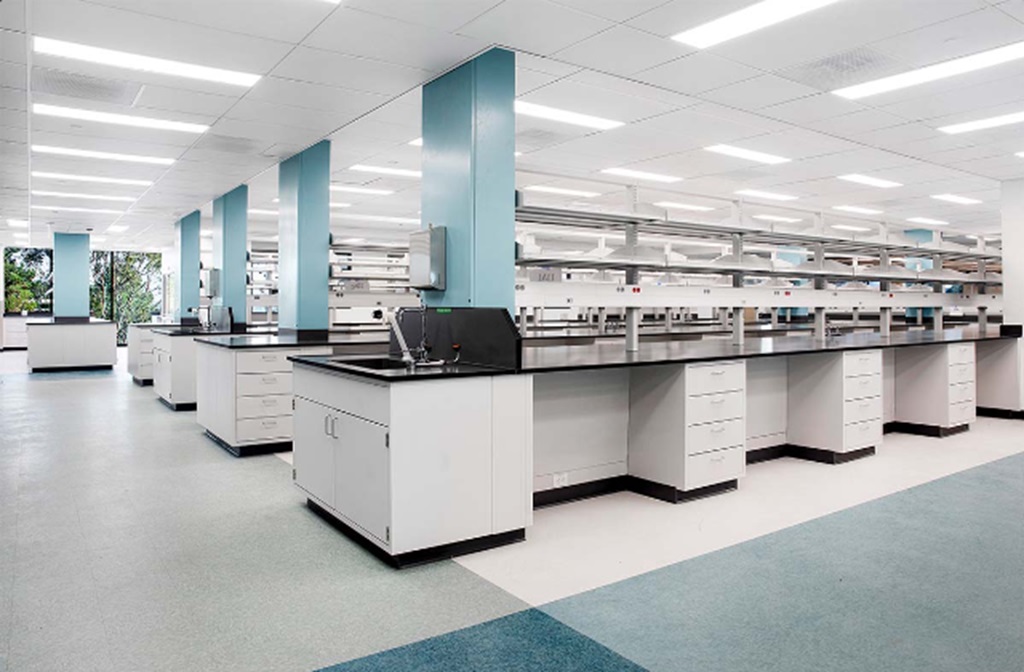
Customization and Adaptability
In high-volume laboratories, one-size-fits-all storage solutions are rarely effective. The dynamic nature of these environments demands storage systems that can be tailored to specific needs and easily adapted as those needs evolve. Customization and adaptability are key to ensuring that storage solutions remain functional and relevant as laboratory demands change over time.
- Tailoring Solutions to Specific Lab Needs: Every high-volume laboratory has its own unique requirements based on the type of work conducted, the materials handled, and the workflow processes in place. Customization allows storage solutions to be designed with these specific factors in mind, ensuring maximum efficiency and utility.
- Material-Specific Storage: Laboratories dealing with specialized materials, such as volatile chemicals or fragile biological samples, require storage solutions designed to address those particular needs. For instance, flammable materials might be stored in fire-resistant cabinets with ventilation systems, while biological samples might need refrigerated units with specific temperature controls.
- Workflow Integration: Storage systems can be customized to fit seamlessly into the lab’s workflow. This might involve placing frequently used items within easy reach, creating dedicated storage zones for different types of activities, or designing storage units that integrate with lab benches and workstations. By aligning storage solutions with the lab’s operational flow, time spent searching for materials or moving between stations can be minimized, enhancing overall productivity.
Adaptability for Future Growth
As laboratories grow and evolve, so do their storage needs. An adaptable storage solution is one that can easily accommodate changes in the lab’s size, scope, and function without requiring a complete overhaul.
- Scalable Storage Systems: Scalable storage systems are designed to expand or contract based on the lab’s changing needs. For example, modular shelving units can be easily added to or reconfigured as the volume of stored materials increases. Similarly, mobile storage units can be moved or replaced as workflows change, providing the lab with the flexibility to adapt to new challenges or opportunities.
- Reconfigurable Layouts: The ability to reconfigure storage layouts is essential in high-volume laboratories, where the nature of work may shift over time. This could involve changing the arrangement of storage units to create more space for new equipment, reallocating storage zones as different types of projects come online, or integrating new technologies that require specific storage conditions. The more adaptable the storage solution, the easier it is for the lab to respond to these changes without disrupting ongoing work.
- Long-Term Cost Efficiency: Investing in customizable and adaptable storage solutions can also lead to long-term cost savings. By selecting systems that can grow and change with the lab, facilities can avoid the need for frequent, costly renovations or equipment replacements. This protects the laboratory’s financial investment and ensures that storage solutions remain effective and relevant for years to come.
Customization and adaptability are essential components of innovative storage solutions for high-volume laboratories. By tailoring storage systems to meet specific needs and ensuring they can evolve alongside the lab, facilities can create environments that are not only efficient and organized, but also prepared for whatever the future may bring.
Integration with Lab Workflow
Effective storage solutions in high-volume laboratories are not just about organizing materials—they are about enhancing the entire laboratory workflow. Integrating storage systems into the daily operations of the lab can lead to significant improvements in efficiency, safety, and productivity. This section explores how strategically designed storage solutions can be seamlessly incorporated into lab workflows to optimize performance.

Optimizing Workflow Through Strategic Placement
The placement of storage units within the laboratory is critical to maintaining a smooth and efficient workflow. Poorly placed storage can lead to unnecessary movement, wasted time, and increased risk of accidents, while strategically positioned storage can streamline operations and reduce bottlenecks.
- Proximity to Workstations: Materials and equipment that are frequently used should be stored close to the workstations where they are needed. For example, reagents and small tools might be kept in cabinets or drawers directly beneath a lab bench, while larger equipment might be stored in nearby units that are easily accessible. This reduces the time spent retrieving items and allows lab personnel to focus more on their tasks.
- Designated Storage Zones: Creating designated storage zones for specific types of materials or activities can further enhance workflow efficiency. For instance, chemicals might be stored in a centralized area with specialized safety features, while biological samples are kept in a refrigerated section of the lab. These zones can be organized to support the natural flow of work, ensuring that materials are always close at hand when needed.
- Minimizing Cross-Contamination: In environments where contamination is a concern, storage units can be strategically placed to minimize the risk. For example, cleanroom laboratories might use separate storage for sterile materials and equipment, with clear pathways to prevent cross-contamination. In such settings, storage solutions that integrate with the overall lab design help maintain the strict environmental controls necessary for high-quality work.
Incorporating Technology

Technology plays a crucial role in modern laboratories, and integrating it with storage systems can further enhance workflow efficiency. Whether through the use of software, automation, or smart storage solutions, technology can help labs operate more smoothly and with greater precision.
- Lab Management Software Integration: Modern lab management software can be integrated with storage systems to track inventory, monitor usage, and ensure that materials are always available when needed. This software can automatically update inventory levels as items are used, trigger reordering processes, and even direct lab personnel to the precise location of stored items. By automating these tasks, labs can reduce human error and save time on manual inventory management.
- Smart Storage Solutions: Smart storage units equipped with sensors and IoT (Internet of Things) technology can provide real-time data on the conditions within storage environments, such as temperature, humidity, and inventory levels. These systems can alert lab personnel to any issues, such as temperature fluctuations that could compromise stored materials, ensuring that conditions are always optimal. In high-volume laboratories, where large quantities of sensitive materials are stored, this level of control can be invaluable.
- Automation for Efficiency: Automated storage and retrieval systems (ASRS), as discussed earlier, can be integrated into lab workflows to handle routine tasks such as retrieving frequently used items. By automating these processes, labs can reduce the time spent on repetitive tasks, allowing staff to focus on more complex and value-added activities.
Enhancing Safety and Compliance
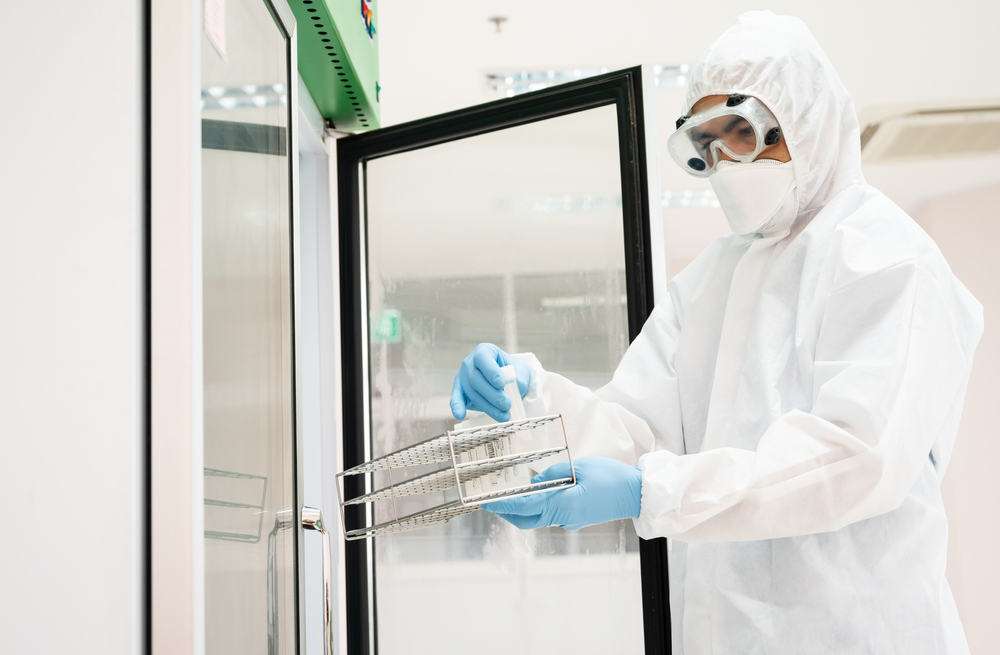
Integrating storage solutions with lab workflow is not only about efficiency—it’s also about ensuring safety and compliance with regulations. Properly designed and placed storage units can help laboratories meet stringent safety standards, protect personnel, and maintain the integrity of experiments.
- Safety Compliance: Many high-volume laboratories are subject to strict safety regulations regarding the storage of hazardous materials. Integrating storage solutions that meet these regulations—such as fire-resistant cabinets, secure storage for controlled substances, and proper ventilation systems—ensures that labs remain compliant while minimizing the risk of accidents.
- Easy Access to Safety Equipment: Storage units can also be designed to include or be placed near safety equipment such as eye wash stations, fire extinguishers, and spill containment kits. This ensures that in the event of an emergency, lab personnel can quickly access the tools they need to respond effectively.
By integrating storage solutions with laboratory workflows, high-volume laboratories can achieve a level of efficiency and safety that supports both daily operations and long-term success. Whether through strategic placement, technological integration, or safety enhancements, thoughtful storage design plays a critical role in the overall functionality of modern laboratories.
Additional Reading: Steel Cabinets: The Smart Choice for Long-Lasting Laboratory Storage
Real-World Examples
To illustrate the impact of innovative storage solutions in high-volume laboratories, let’s explore several real-world examples to demonstrate how tailored storage systems can transform lab environments, enhancing efficiency, safety, and overall performance.
Example 1: Pharmaceutical Research Lab

Challenge:
A large pharmaceutical research lab was facing significant workflow inefficiencies due to the scattered placement of storage units across its facility. Researchers frequently lost time searching for reagents and equipment, which were stored in multiple locations far from workstations. Additionally, the lab was struggling with space constraints, making it difficult to accommodate the growing inventory of materials.
Solution:
The lab implemented a modular storage system that allowed for flexible reconfiguration of storage units. Adjustable shelving and stackable cabinets were installed directly adjacent to workstations, ensuring that frequently used items were always within reach. The lab also introduced a mobile storage system for large equipment, which could be easily relocated to create more space when needed.
Outcome:
The integration of modular and mobile storage solutions significantly improved the lab’s workflow. The lab was able to accommodate a 20% increase in inventory without needing more floor space. The new system also enhanced safety by reducing clutter and ensuring that hazardous materials were stored securely.
Example 2: Biotechnology Laboratory
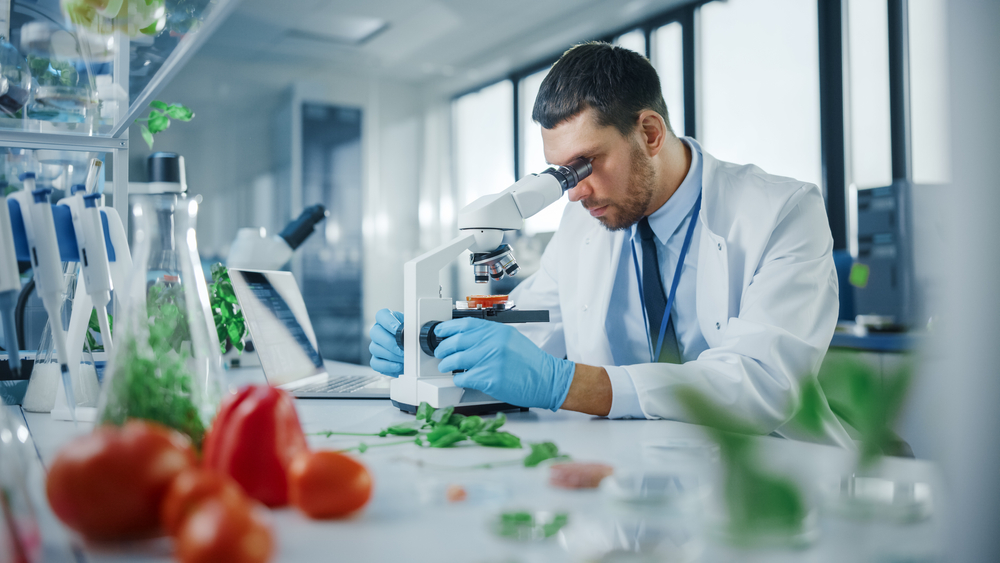
Challenge:
A biotechnology laboratory handling sensitive biological samples required strict environmental controls to maintain the integrity of its research. However, the existing storage system lacked the necessary climate control features, leading to frequent sample degradation. Additionally, the lab’s inventory management was manual, resulting in occasional stock outs and wasted materials.
Solution:
The lab invested in climate-controlled storage units specifically designed for biological samples. These units offered precise temperature and humidity controls, ensuring that samples were stored under optimal conditions. The lab also integrated smart storage solutions with its inventory management software, enabling real-time tracking of materials and automated reordering processes.
Outcome:
With the new climate-controlled storage, the lab experienced a substantial reduction in sample degradation, which significantly improved the reliability of its research. The integration of smart storage and inventory management also led to more efficient use of materials, with a considerable decrease in waste and stock outs. Researchers noted that the improved storage environment allowed them to focus more on their work, rather than on managing storage issues.
Example 3: Chemical Manufacturing Facility
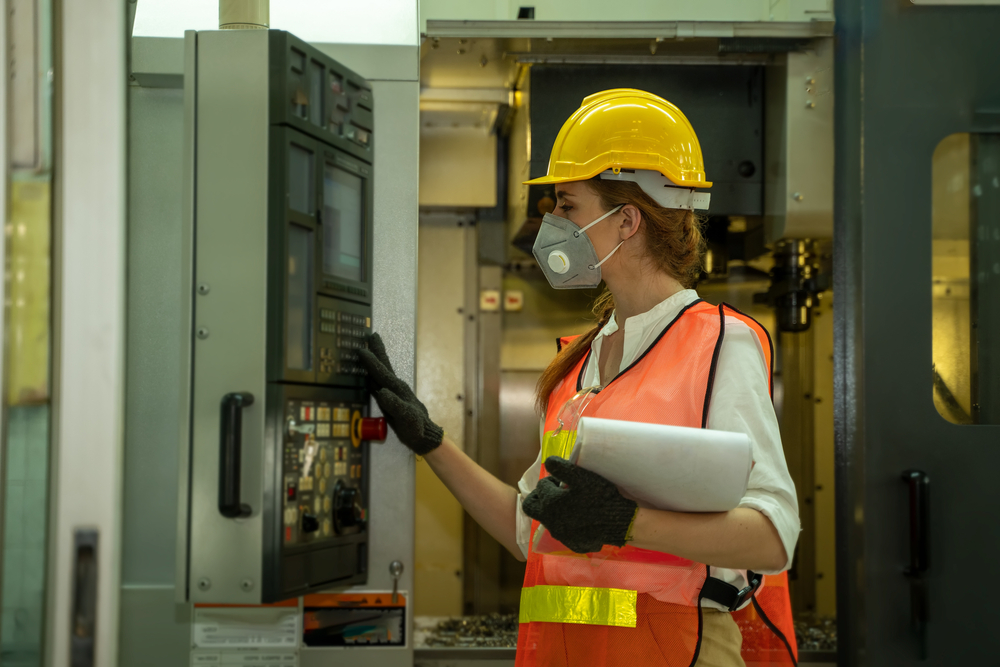
Challenge:
A high-volume chemical manufacturing facility needed to store a wide variety of hazardous materials in a safe and compliant manner. The facility’s existing storage system was outdated, lacking proper ventilation and secure storage options. This posed safety risks and made it difficult to comply with industry regulations.
Solution:
The facility upgraded to a modern storage system that included fire-resistant cabinets, secure lockers for controlled substances, and ventilated storage units for volatile chemicals. Each storage unit was strategically placed in designated safety zones, away from high-traffic areas, to minimize the risk of accidental exposure.
Additionally, the facility implemented automated inventory tracking to ensure that all materials were accounted for and stored according to regulatory requirements.
Outcome:
The new storage system dramatically improved safety at the facility, with a huge reduction in reported safety incidents. The fire-resistant and ventilated units ensured that hazardous materials were stored in compliance with industry standards, helping the facility pass regulatory inspections without issue.
The integration of automated inventory tracking also improved operational efficiency, reducing the time spent on manual checks and enhancing overall productivity.
Example 4: Academic Research Lab
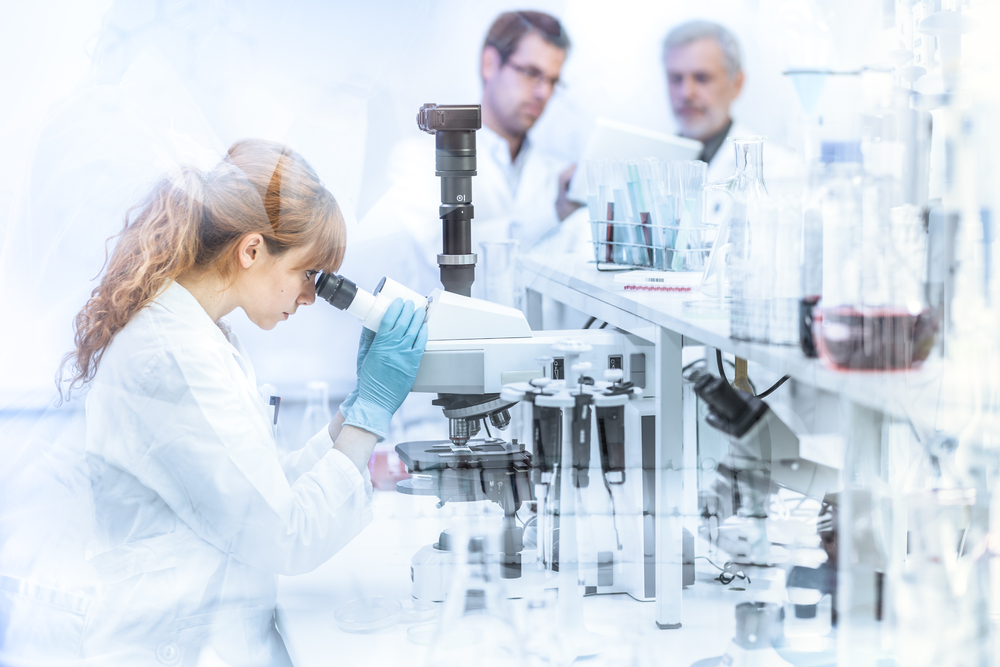
Challenge:
An academic research lab handling multiple ongoing projects struggled with maintaining an organized workspace. The lab had limited space, and the mix of equipment, samples, and documents often led to clutter, making it difficult for researchers to find what they needed quickly. The lab also required a way to securely store sensitive research data and materials.
Solution:
To address these challenges, the lab introduced high-density vertical storage units and reconfigurable shelving systems that could be adjusted to fit the lab’s varying needs. Lockable cabinets were installed to securely store sensitive materials and confidential research data.
The lab also adopted a digital inventory system to keep track of materials and equipment, ensuring that everything was properly labeled and easy to locate.
Outcome:
The introduction of high-density and secure storage solutions helped the lab maximize its limited space, reducing clutter and improving organization. Researchers found it easier to locate materials, leading to a significant increase in productivity. The secure storage options also gave the lab confidence that sensitive materials were protected, supporting compliance with academic and ethical standards.
These case studies highlight the transformative power of innovative storage solutions in high-volume laboratories. By addressing specific challenges with tailored approaches, these labs not only improved their operational efficiency but also enhanced safety, compliance, and overall research quality. These examples serve as a testament to the critical role that well-designed storage systems play in the success of high-volume laboratory environments.
Conclusion
In high-volume laboratories, where efficiency, safety, and adaptability are paramount, innovative storage solutions play a critical role in optimizing operations. From modular designs that maximize space to advanced technologies that enhance inventory management, these solutions are tailored to meet the unique demands of modern laboratories.
By integrating storage systems seamlessly into lab workflows, facilities can improve productivity and ensure compliance with stringent safety standards. The examples highlighted in this article demonstrate the tangible benefits of investing in customized, adaptable storage solutions, underscoring their importance in fostering a well-organized, efficient, and safe laboratory environment.
As laboratory needs continue to evolve, the demand for even more advanced and flexible storage solutions will only grow. Future trends may include the increased use of automation, AI-driven inventory management, and sustainable materials that contribute to greener laboratory environments.
Ongoing innovation in storage design will be essential to meet the challenges of tomorrow’s laboratories, ensuring they remain at the forefront of scientific discovery and operational excellence. Explore the best storage solutions for your lab’s specific needs and stay ahead of the curve—consult with experts who understand the unique demands of high-volume laboratories.




